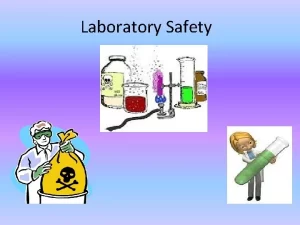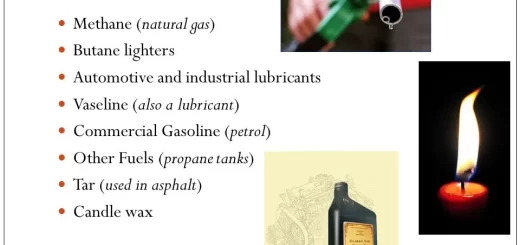General Laboratory rules, Laboratory hazards, and Simple First Aid in the Laboratory
Organic chemicals such as ethers, alcohols, acetone…etc. are easily evaporated at room temperature. Vapors of such chemicals are very inflammable, Therefore, the student must be very careful when using these solvents. In order to minimize the accidents, the following precautions are indicated.
Laboratory hazards
1. Fire and explosion
Inflammable solvents must be stored in a cool room separately, such a storeroom must be quipped ventilating devices and should be ventilated every now & then the inflammable solvents should be taken to the laboratories as needed, and in the smallest amounts required for experiments.
Before opening a bottle containing an inflammable solvent, make sure there is no flame around, Never heat inflammable solvents on an open flame, If a fire does take place, keep calm, do not become confused, and Immediately ask the laboratory instructor for help.
2. Corrosive and Caustic Chemicals
a. Strong Acids: Many acids such as sulfuric, hydrochloric, nitric….etc. are dangerous when in contact with tissues. Thus the following precautions must be followed when handling such chemicals:
- Never hold the container from the stopper, hold it with two hands.
- When pouring acid from a bottle into another container, prevent splashing by pouring very slowly.
- When the dilution of an acid is desired, always the acid should be added to water. If you are using a pipette use suction pumps, hold the pipette against the wall of the container that has water in it. Mix the diluted acid frequently and if heat develops either wait a few minutes before you add more acid or cool the container.
- After using the bottles return them back safely to their specific place.
b. Strong Bases: Many bases such as NaOH, KOH, NH4OH….etc. are highly caustic and may cause severe damage to the body. The following precautions are recommended:
- Do not store strong bases in glass-stoppered bottles.
- When dissolving NAOH or KOH in water, make sure that the base is added slowly to water since a large amount of heat will be released if large amounts of base is added to water.
- When opening a bottle that contains ammonia, be careful not to hold your face above the opening of the bottle, or better open it in a fume-hood.
3. Poisons
There are many compounds such as cyanides, and various alcohols such as methyl alcohol, mercurials…etc. that may not cause skin damage but are highly toxic. When handling such substances, one must be extremely careful and follow meticulously the precautions outlined below:
- Whenever possible, place the toxic solvents in the hood.
- Never use an ordinary pipette for transferring toxic solvents. An automatic pipette or a pipette equipped with a rubber bulb should be employed.
- Make sure that all of the containers are properly labeled so that a poisonous solution will not be mistaken for something else.
General Laboratory Rules
- Always wear your lab coat.
- No eating or drinking inside the lab.
- No bags or personal items and NO SITTING on the lab benches.
- When in doubt… ASK YOUR INSTRUCTOR.
- Listen to your instructor carefully and stand in your proper position in the lab.
- Wear gloves if you are going to handle a biological sample such as blood.
- Use only clean glassware. Before working, check your glassware for any cracks.
- Never taste anything or touch chemicals by hand.
- Never pour used reagents back into the bottle.
- Always leave your working area clean.
Cleaning of Laboratory Glassware
Good and reliable biochemical depend to a great extent on using clean glassware in the experiment. Glassware for biochemical use may be prepared as follows:
- Glassware for general use is cleaned by soaking it in a solution of detergent for 24 hours, and washing it with tap water followed by distilled water. Dry in an oven.
- Pipettes must be placed in a jar filled with water. Place the pipettes with the tips up and soak for a few hours. Then wash in a pipette washer and wash for at least 2 hours. Drain well and place them in a jar containing distilled water. Drain and dry in an oven (at 80″ C) for 2 hours.
- Greasy glassware should be cleaned in a dichromate-sulfuric acid cleaning solution. This solution is 10% potassium dichromate in 9N sulfuric acid.
Simple First Aid in the Laboratory
- Burns: Keep covered with a saturated solution of tannic acid or linseed oil or picric acid.
- Cuts: Apply an antiseptic such as mercurochrome, or Zephiran chloride.
- Acid on Clothes: Neutralize with dilute NH4OH and wash with H2O.
- Alkali on Clothes: Neutralize the base with dilute acetic acid and wash with H2O.
- Acid in Eye: Wash with plenty of water followed by dilute NaHCO3, and finally with water.
- Alkali in Eve: Wash with water followed by boric acid and then with H2O.
- Fire: Have ready an extinguisher.
- Clothing on Fire: Smother with a woolen blanket.
You can subscribe to Science Online on YouTube from this link: Science Online
You can download the Science Online application on Google Play from this link: Science Online Apps on Google Play
Laboratory Instruments use, How to prepare a solution? and How to dilute a concentrated solution.
Classification of Acids according to its strength (degree of ionization), Its source & Basicity
Classifications of bases according to strength ( degree of ionization ) and molecular structure
Properties of Acids and Bases & Theories defining acids and bases
Types of compounds, Properties of Acids, Bases (alkalis), Oxides and Salts




